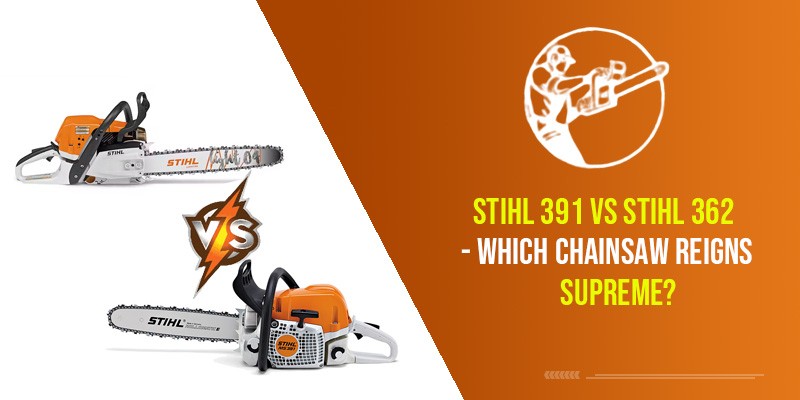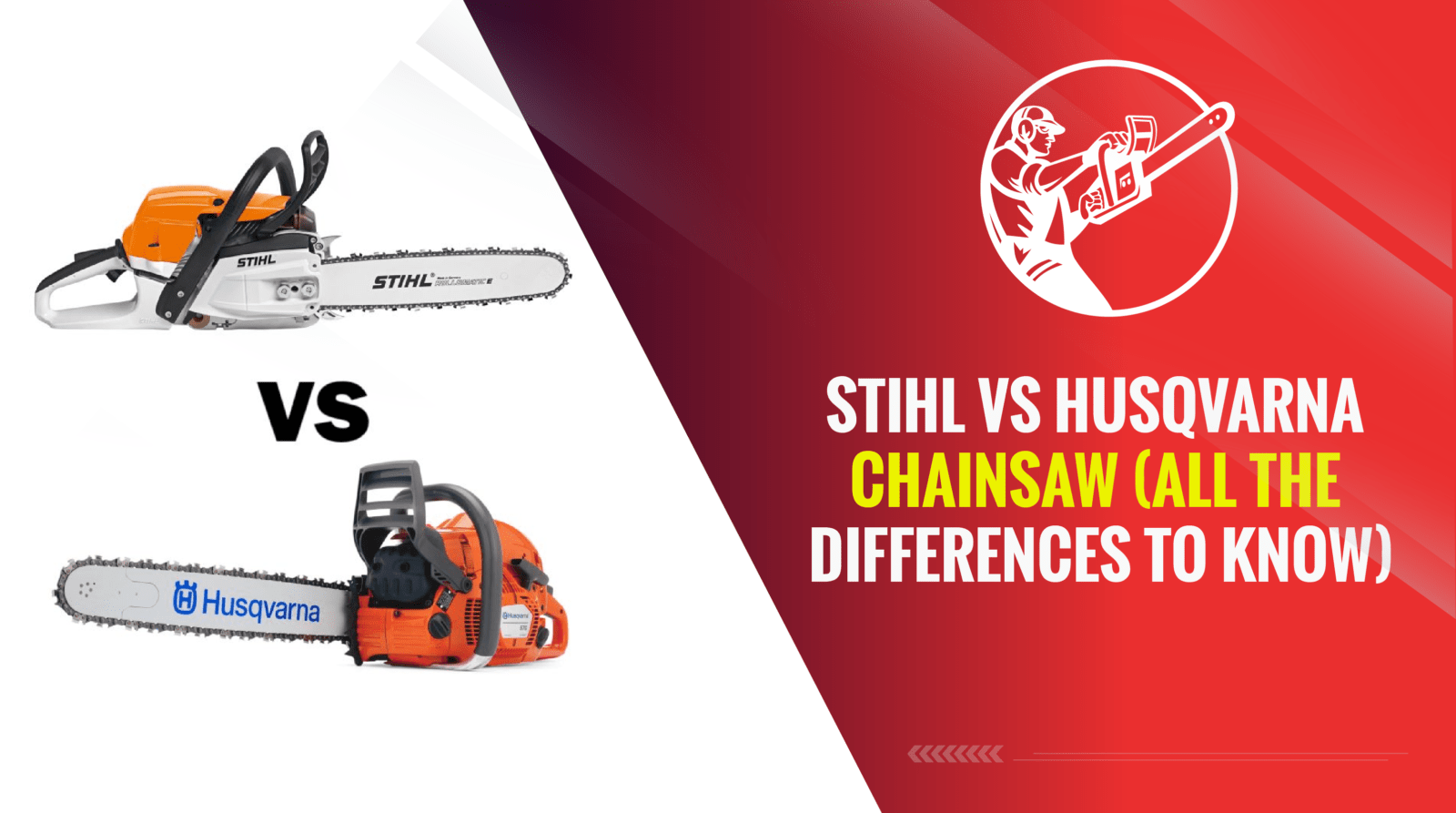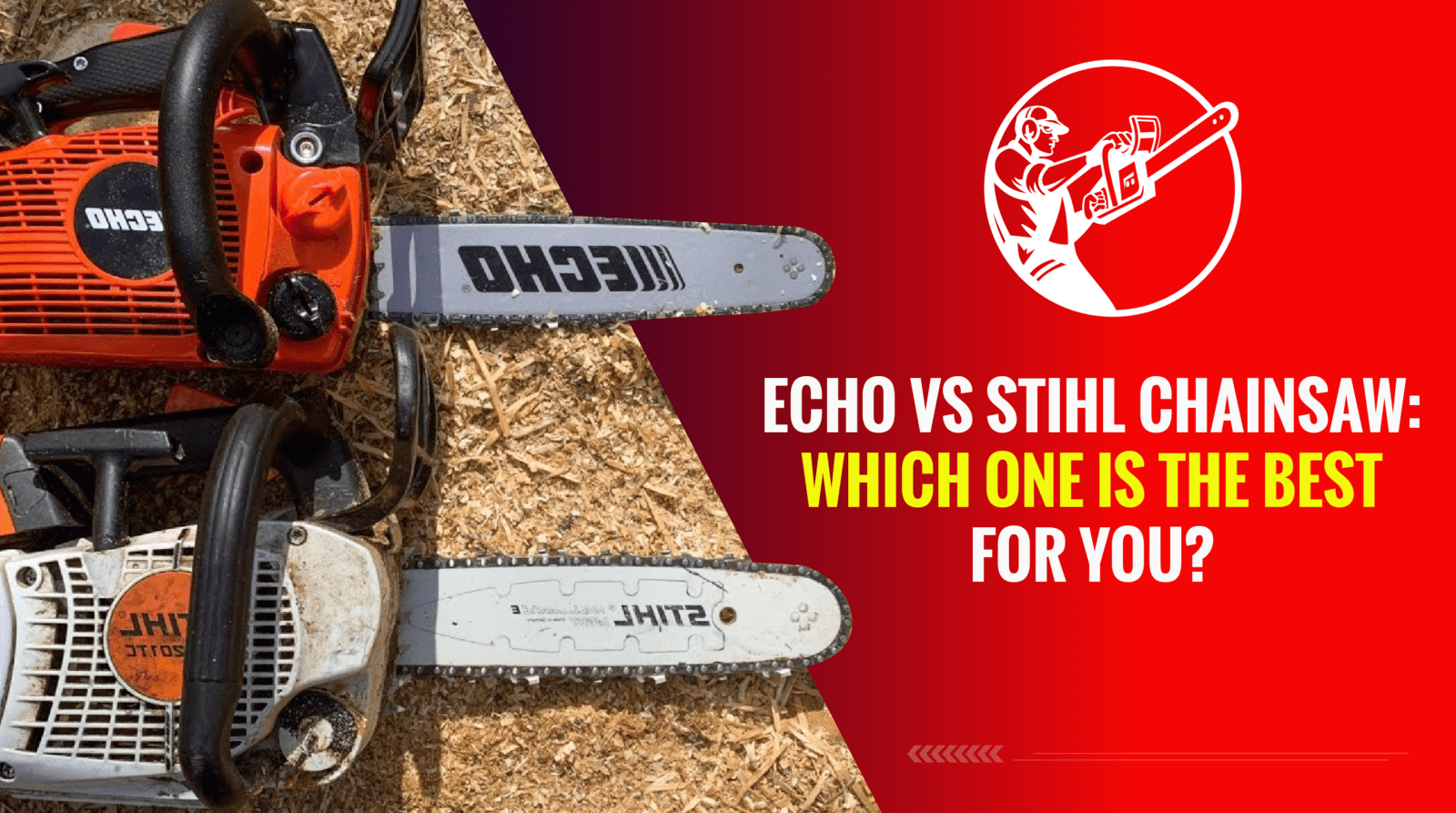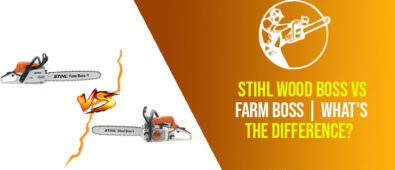Renowned for their unwavering commitment to quality, performance, and durability, Stihl chainsaws have earned the trust of professionals and homeowners worldwide. Among their impressive lineup, the Stihl 391 and Stihl 362 stand tall as two challenging opponents, each demonstrating unique features and capabilities.
Welcome to our comprehensive comparison of the Stihl 391 and Stihl 362 chainsaws, where we delve deep into the fineness of these two outstanding power tools. Whether you are a seasoned professional in the forestry industry or a passionate DIY enthusiast seeking the perfect cutting companion, this in-depth analysis aims to empower you with the knowledge needed to make an informed decision.
So, join us as we delve deeper into the realm of chainsaws, exploring the features of these products and many other chainsaws that are the epitome of excellence. Also, look at our comparison of Stihl MS250 VS MS251 and Stihl Wood Boss VS Farm Boss, unlocking the secrets to explore the power that fits perfectly in your hands. So, let’s get started!
| Feature | Stihl 391 | Stihl 362 |
| Engine Power (HP) | Around 4.4 HP | Around 4.0 HP |
| Ideal for | Heavy-duty tasks, forestry work | All-around cutting, residential tasks |
| Weight | Heavier | Lighter |
| Cutting Bar Length | 20 to 25 inches | 16 to 20 inches |
| Fuel Efficiency | Less fuel-efficient | More fuel-efficient |
| Vibration Control | Advanced anti-vibration technology | Advanced anti-vibration technology |
| Price | Higher | Lower |
Stihl 391 vs. Stihl 362 – Features
Engine Power and Performance
The Stihl 391 is a workhorse in the Stihl chainsaw lineup, boasting a robust engine that typically generates around 4.4 horsepower. This power output makes it suitable for demanding cutting tasks, such as felling giant trees, cutting through dense hardwoods, and handling professional forestry work. Its high torque and chain speed ensure efficient cutting performance, making it a go-to choice for experienced loggers and arborists who need a reliable and powerful tool.
The Stihl 362 is no slouch in the power department, featuring a reliable engine that typically produces around 4.0 horsepower. This power output provides ample cutting force, making it suitable for routine yard work and tree maintenance to smaller-scale professional applications.
Weight and Portability
The Stihl 391 is generally heavier than the Stihl 362 due to its larger engine and additional features. While the weight provides stability and control during heavy-duty tasks, it might be less convenient for those who prioritize portability or need to work in challenging or elevated positions.
One of the notable advantages of the Stihl 362 is its lighter weight compared to the Stihl 391. This more lightweight design enhances its maneuverability and control, making it an excellent choice for users who need a portable option that involves climbing or navigating tight spaces. The reduced weight also results in less fatigue during extended use.
Cutting Bar Length
One of the standout features of the Stihl 391 is its capacity for accommodating longer cutting bars, typically ranging from 20 to 25 inches. This extended reach makes it an excellent choice for professionals, as it can cut trees and handle thicker logs. However, the lengthy bar may be less suitable for precision work or tasks in confined spaces.
The Stihl 362 typically has a slightly shorter cutting bar ranging from 16 to 20 inches. This length is well-suited for general pruning, limbing, and cutting tasks encountered in residential settings and smaller-scale professional jobs. It strikes a balance between cutting capacity and precision, making it versatile for various applications.
Fuel Efficiency
Given its higher horsepower, the Stihl 391 consumes more fuel as compared to its counterpart, the Stihl 362. While it delivers superior cutting performance, users should expect more frequent refueling during extended use. As such, it is important to consider fuel efficiency when planning extended cutting sessions in remote locations.
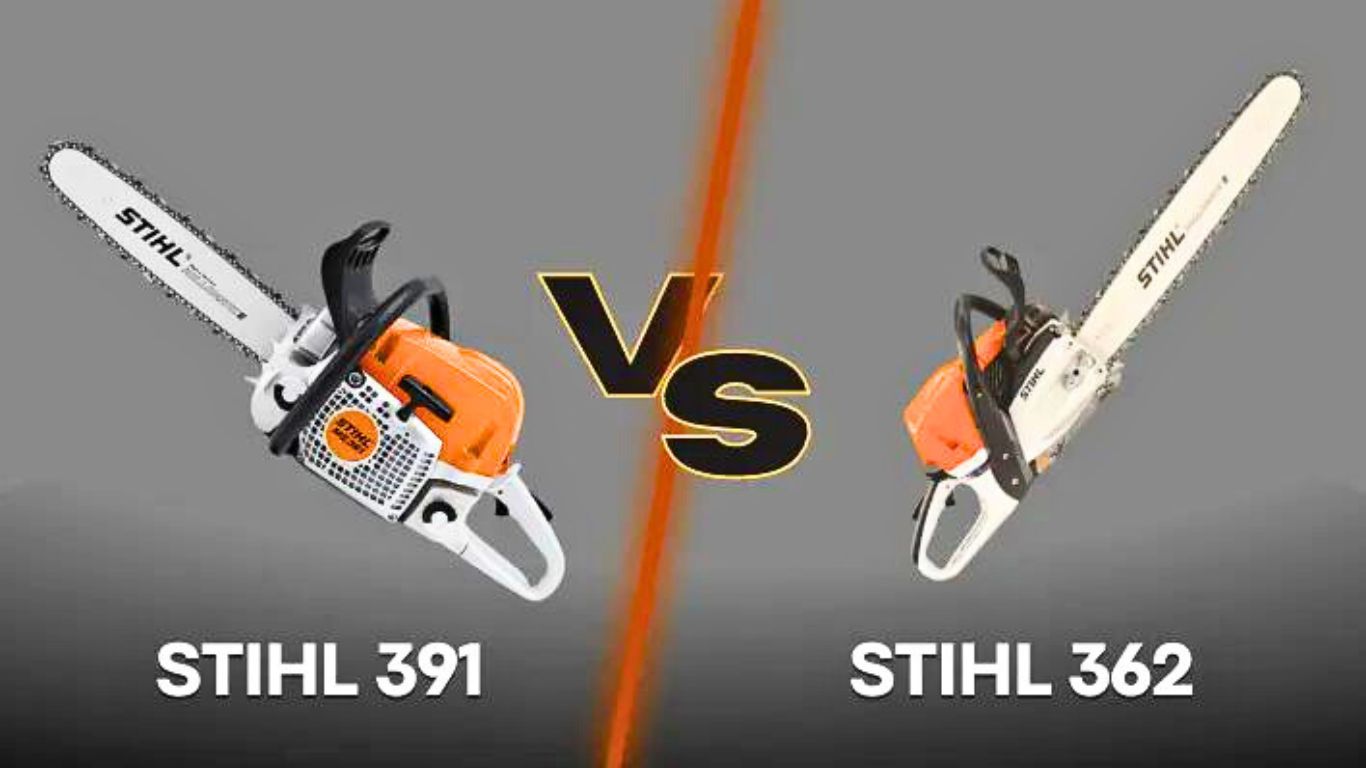
The Stihl 362’s slightly smaller engine contributes to better fuel efficiency as compared to the Stihl 391. This means users can expect longer run times and reduced fuel costs, making it an economical choice for those who frequently use their chainsaws.
Vibration and Comfort
The Stihl 391 incorporates anti-vibration technology to reduce operator fatigue and ensure a more comfortable cutting experience. While it does an admirable job of minimizing vibrations, the higher power output might still lead to slightly more vibrations compared to the Stihl 362.
Stihl has equipped the 362 with advanced anti-vibration technology to ensure a comfortable user experience. The reduced vibration levels enhance operator comfort during extended periods of use, reducing the risk of hand and arm fatigue.
Price
As expected, the Stihl 391 generally comes with a higher price tag than the Stihl 362 due to its enhanced power and performance capabilities. It is an investment worth considering for professionals who require its formidable cutting capacity and are willing to pay for the extra features.
The Stihl 362 typically comes at a more budget-friendly price point compared to the Stihl 391. This makes it an attractive option for both homeowners and professionals who seek a reliable chainsaw without breaking the bank.
My Verdict
The Stihl 391 and Stihl 362 are both exceptional chainsaws, each with its own set of strengths and intended applications. The Stihl 391 shines in heavy-duty professional use, with its more powerful engine and more extended cutting bar catering to demanding tasks. However, its higher weight and fuel consumption may be less suitable for those seeking a more portable and fuel-efficient option.
Conversely, the Stihl 362 shows a balance between performance and portability, making it a great all-around choice for a wide range of cutting tasks. Its lighter weight, better fuel efficiency, and lower price point make it appealing to both professionals and homeowners looking for a dependable and versatile chainsaw.
Ultimately, the choice between the two models will depend on the specific needs and preferences of the user. Whether you prioritize raw power for heavy-duty tasks or seek a more portable and economical option, both Stihl chainsaws are built to deliver reliable cutting performance for years to come.
Stihl 391 Vs Stihl 362 – FAQs
Conclusion
Both the Stihl 391 and Stihl 362 are exceptional chainsaws, and the choice between the two depends on your specific needs and preferences. If you require a powerhouse with a longer cutting bar for heavy-duty tasks and are willing to invest in greater cutting performance, the Stihl 391 could be the better option. On the other hand, if you prioritize portability, fuel efficiency, and a more budget-friendly choice without sacrificing too much cutting power, the Stihl 362 is likely the more suitable chainsaw.
In the end, it’s essential to assess the type of work you’ll be undertaking, your budget, and your physical capabilities to make an informed decision. Regardless of your choice, both Stihl models are backed by a reputable brand known for their durability and performance, ensuring that you’ll be equipped with a reliable tool for your cutting needs. But if you are a beginner and looking for more information on different brands, we have compared the Stihl Vs Husqvarna chainsaw for your ease.
Better Luck!

